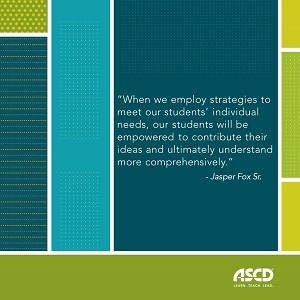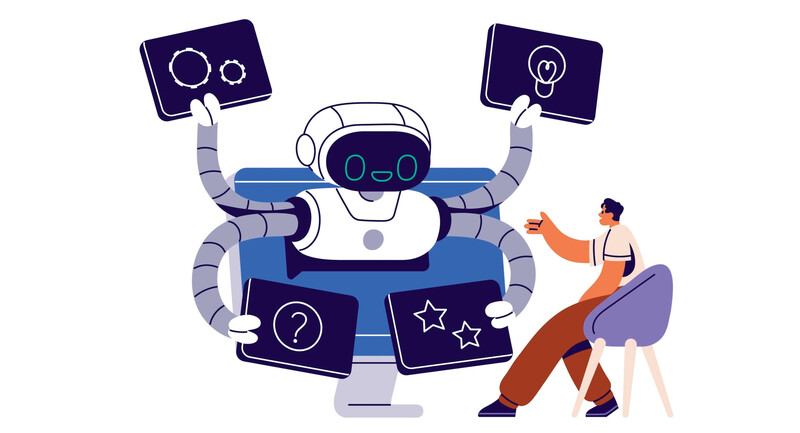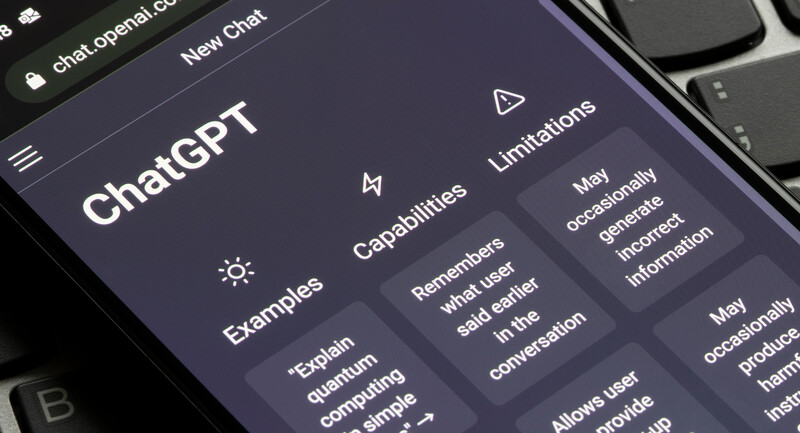Integrating artificial intelligence (AI) into school districts has the potential to enhance learning outcomes and administrative efficiency. However, AI tools must be carefully examined to ensure they serve the best interests of all stakeholders—students, teachers, staff, and administrators—and justify the cost of a district-wide rollout.
As a veteran educator who has also held the role of director of professional learning and director of technology, I am actively involved in exploring AI’s potential in school settings. I also have done research focusing on culture and launching initiatives and know that the complexities around implementing AI in education can be overwhelming for school leaders. One way leaders can navigate this process is by applying a transformational leadership lens, which can help structure thoughts and actions during AI adoption. Transformational leadership, introduced by James V. Downton in 1973 and expanded upon by James Burns in 1978, focuses on restoring morale, building team cohesion, and mitigating resistance to change.
Transformational leaders influence change through "The Four I's"—Idealized Influence, Inspirational Motivation, Intellectual Stimulation, and Individualized Consideration. This approach seeks to better the organization and its members, making it ideal for times of change. Let’s look at how "The Four I's" can frame the introduction of AI to a school district.
Idealized Influence: Leading the Charge
Idealized influence is an emotional aspect of transformational leadership, where leaders act as role models, inspiring followers to emulate their moral and ethical conduct. Idealized influence requires leaders to be upfront, accept glitches, and encourage exploration. If leaders are not comfortable with making exploratory errors, teachers will also hesitate to take risks and embrace change. With AI adoption, the administrative team should be transparent with faculty through newsletters and videos that showcase the integration of AI tools and streamlined workflows.
Considerations:
Expect to be uncomfortable. Diving into AI, we are learning about something so vast and far out of the scope of our typical expertise. Everyone is on a learning curve regarding AI. Gen AI is relatively new; the lack of a skill set around making use of it, and the shallow available knowledge base, could make some leaders feel uncomfortable.
Take action. To be that idealized leader, you need to self-educate to learn AI fundamentals, including neural networks and machine learning, and then provide that learning opportunity to your staff. In addition, you don’t have to do this alone. You probably already have staff experimenting with AI models. Consider bringing them together for brainstorming sessions. Having foundational knowledge about the way AI works will enable you to make informed decisions and effectively guide the implementation process. I also recommend attending conferences and workshops and seeking out sites like:
- Khan’s Academy, which has a resource hub for district leaders.
- Podcasts like Everyday AI, which provide background on the global issues around AI development and will help you keep a pulse on the industry outside of education.
- Paid AI models to improve district functioning. For example, Google released NotebookLM, a dashboard that allows users to upload notes, PDFs, and documents to simplify research.
Inspirational Motivation: Culture Awareness
Inspirational motivation nurtures culture. It involves leaders who communicate high motivation, morale, and expectations to colleagues and staff. Moving toward a focus on emerging AI in education and the workplace may incite fear or excitement in educators. A leader skilled at motivating staff will foster a sense of safety throughout the district. Ultimately, culture will make or break any initiative.
Considerations:
Ensure AI will be used to improve work-life balance. K-12 education faces a growing shortage of educators, which is expected to worsen over the next decade. This shortage is driven by retirements, pre-retirement departures due to stress, poor work-life balance, and inadequate state incentives for new teachers. The optimal use of AI is to streamline tasks and enhance work-life balance for educators, not to increase their workload capacity. AI can dramatically reduce a teacher’s prep time, which gives them more time for quality interactions with their students and less work being taken home.
Know the ramifications—including ethics—of implementing any AI tool. Some teachers might have an issue with AI adoption into district practices, such as curriculum and assessment development. Meet quarterly with other district and teacher leaders to discuss their processes and concerns. Teachers need to have a say in how AI is implemented in the classroom, if at all. Of course, developing ethical AI practices and safeguarding student data is a must.
Integrating AI into school districts is complex and requires strong, compassionate leadership.
Intellectual Stimulation: Fostering Innovation
A leader who embodies intellectual stimulation will provide opportunities for staff to be creative and innovative. One way to start is to create a cohort of AI innovators to enable teachers to support each other and challenge themselves to better their practice. This stage is about planning the innovation’s structure so AI tools can be explored and reflected upon. The hallmarks of this stage include critical thinking, challenging the status quo, and encouraging different perspectives.
Here are some steps to create an AI initiative in your district:
- Survey. Based on the brainstorming sessions you’ve had with teacher leaders, teachers, and administrative staff, develop a survey to identify which AI tools teachers and staff are experimenting with on their own, their experiences with these tools, and the pain points they hope AI will solve (such as differentiating content or reviving old lesson plans). Tools like Curipod, Almanak, School AI, and MagicSchool may be of interest. Additionally, you can survey students to understand their pain points and the apps they use for homework or test prep.
- Assemble pilot cohorts. Cohorts—innovative teachers who are already exploring AI and curious teachers who want to learn more—are highly effective in professional development, offering a safe space for innovation and support. Create such a program for AI explorations based on surveyed pain points. Leadership involvement is crucial; idealized influence and inspirational motivation require a hands-on, engaged administration. A leader in this instance will arrange for either release time or funding for extra hours beyond the workday for cohort meetings. Additionally, this leader would handle scheduling and acquiring resources for the teachers or staff to experiment with. Teachers need to see that you care and value their time and effort.
Individualized Consideration: Scaling the Rollout
Once the AI programs identified have been tested and vetted for your district and teachers’ needs, have the members of the innovative cohort pilot the initiative by offering professional development opportunities to their colleagues.
Considerations:
- Introduce AI to faculty. The pilot team needs to offer professional development on these selected tools. To build momentum, the pilot group can offer demos at department and faculty meetings. The district can also offer in-service classes (in-person, virtual, synchronous, and asynchronous), and provide individual coaching by AI ambassadors. Incentivize participation with credits or release time.
- Keep the momentum going. The leader should reconvene the pilot cohort every three to six months to debrief on the AI tools and their efficacy, discuss their experiences, adjust plans, and stay updated on AI developments, enriching the district’s knowledge and capabilities.
Integrating AI into school districts is complex and requires strong, compassionate leadership. By applying transformational leadership theory, administrators can become engaged role models who inspire and coach staff through change. Such leaders keep in mind the humans most impacted by this change—our teachers. While students will grow up in a world where AI is embedded in the fabric of life, teachers are being asked to shift and adapt their practices yet again to keep pace with technology and society. Transformational leadership can help make these shifts easier, more efficient, and more productive, fostering a culture of trust and agency and putting culture and people first.








